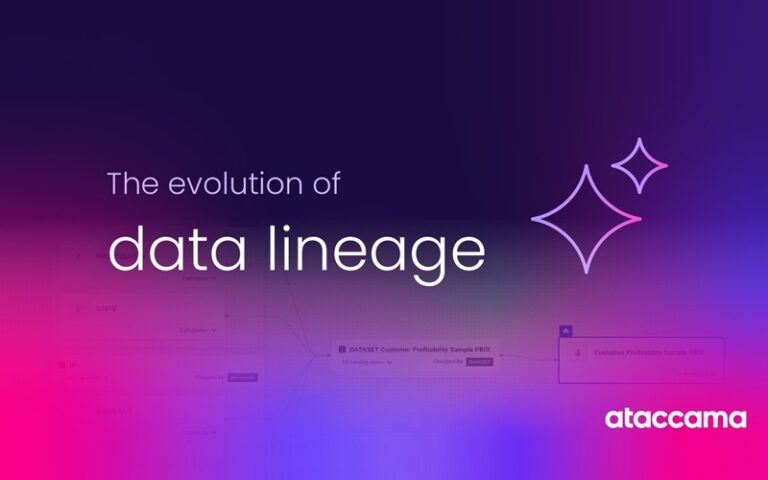AI is being applied at every level of the technology stack, clearly. The latest element of the total technology topography to feel the acceleration of intelligent automation is data lineage. Data trust company Ataccama is now further aligning its platform to help business users to understand how data moves and changes across systems. It does this without the need to write a single line of SQL, the language much beloved of database engineers and used extensively in traditional relational database management systems.
Why business users?
If database administrators and DevOps operations staff are the business stakeholders traditionally associated with data lineage analysis, why is Attacama seeking to put this knowledge in the hands of business users? Because, says the company, business users need to quickly audit, trust, and act on their data
The snappily-named Ataccama ONE v16.2 is the latest version of the company’s unified data trust platform. That “business user level functionality” here manifests itself as compact lineage views (so that business users don’t get shown too much information and are only presented with the information analysis that they need) and improved performance.
Jessica Smith, VP of data quality at Ataccama, argues that “most business teams can’t see where their data comes from or how it has been changed” today and so, instead, they rely on technical experts to explain the logic behind key metrics.
This, she says slows decision-making and exposes organizations to unnecessary risk. Forrester reports that only 20% of business decision-makers are self-sufficient with analytics tools. The result is a persistent trust gap that makes it harder to govern data, scale analytics, or move at the speed business demands.
Data flows, in plain language
“Ataccama closes that gap by turning complex data logic into plain language. Business users can now trace a data point’s origin and understand how it was profiled or flagged without relying on IT,” said Smith and team. “Ataccama shows how data flows through systems and provides plain-language descriptions of the steps behind every number.”
For example, in a financial services setting, a “data steward” (i.e. any professional tasked with the responsibility for managing and maintaining an organization’s data assets, data quality and adherence to data governance policies) can immediately see how a risk score was derived or how a flagged transaction passed through a series of enrichment and quality checks. That kind of visibility shortens reviews, streamlines audits, and gives business teams the confidence to act on the data in front of them.
“We’re seeing enterprise data projects increasingly kick off in the business, not just in IT, and that changes everything,” said Jessica Smith, VP of Data Quality at Ataccama. “The teams driving these initiatives need to understand where the data comes from, how it’s changed, and whether it can be trusted. That’s why we’ve focused on making complex data processes, like profiling, quality checks, and lineage, clear and usable to everyone. Because if data is going to scale across the business, it has to work for the people who are using it.”
What is AI-powered data lineage?
But what is AI-powered data lineage, really? Ataccama says it is its platform’s ability to automatically generate “readable descriptions” of how data was transformed both upstream and downstream, clarifying filters, joins and calculations, so business users can understand the logic behind each dataset… once again, without reading SQL.
Smith says that the compact lineage diagrams on offer here present a simplified, high-level view of data flows with the option to drill into details on demand. This makes it easier to identify issues, answer audit questions and align stakeholders on how data flows through the organization.
Edge processing for secure lineage enables metadata extraction from on-premises clouds or restricted environments without moving sensitive data to the public cloud. Organizations can maintain compliance, minimise risk, and still get full visibility into their data pipelines, regardless of where the data lives.
According to Attacama, users can now execute profiling and data quality workloads in pushdown mode for BigQuery and Azure Synapse, minimising data movement and improving performance for large-scale workloads. The release also includes volume support for Databricks Unity Catalog to optimise execution within modern cloud platforms.
Got the t-shirt yet?
Will every business user now insist that they get their hands upon data lineage controls… and will they say that they need them now, with a side order of AI and with a special t-shirt to show off their newfound capabilities? No, obviously not, but where data lineage responsibilities do now amplify in importance in an increasing number of roles (security analysis, business intelligence analysts, compliance officers, data quality specialists, legal counsel professionals, product managers, risk managers and even sales managers ) this stuff does matter.
